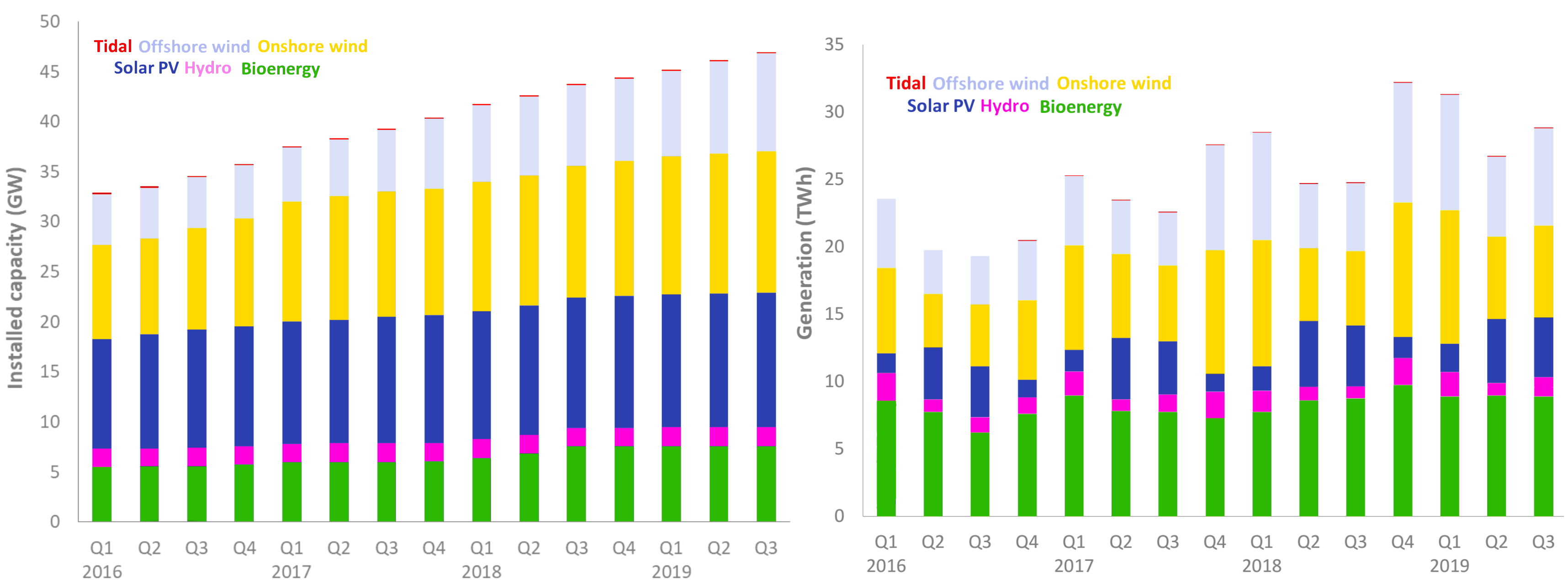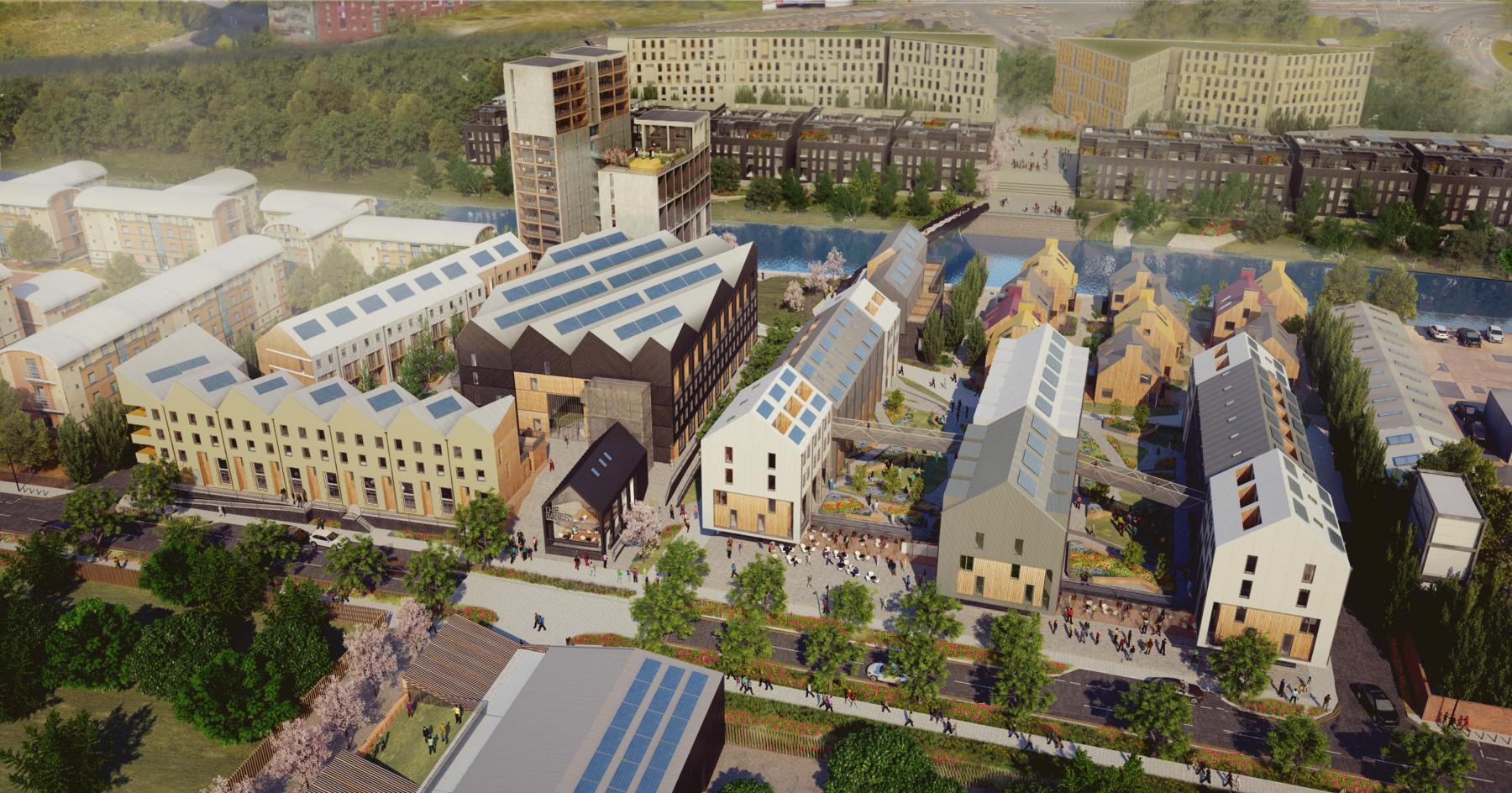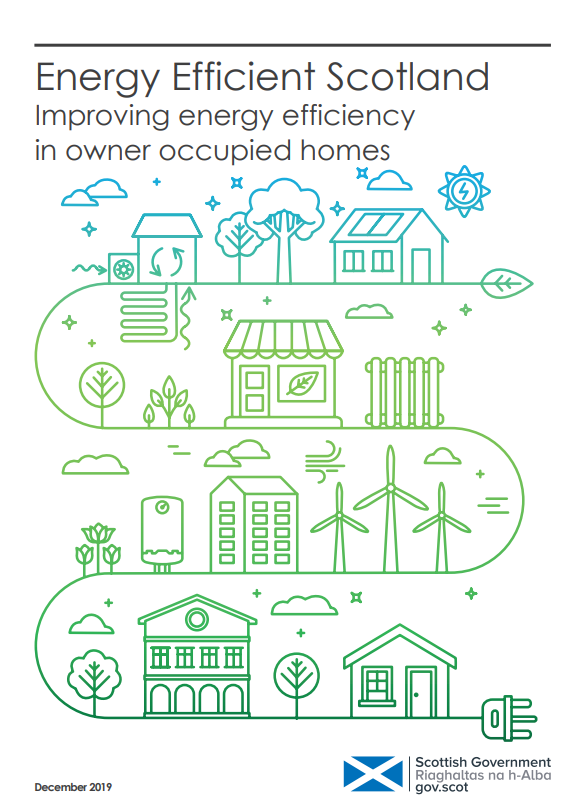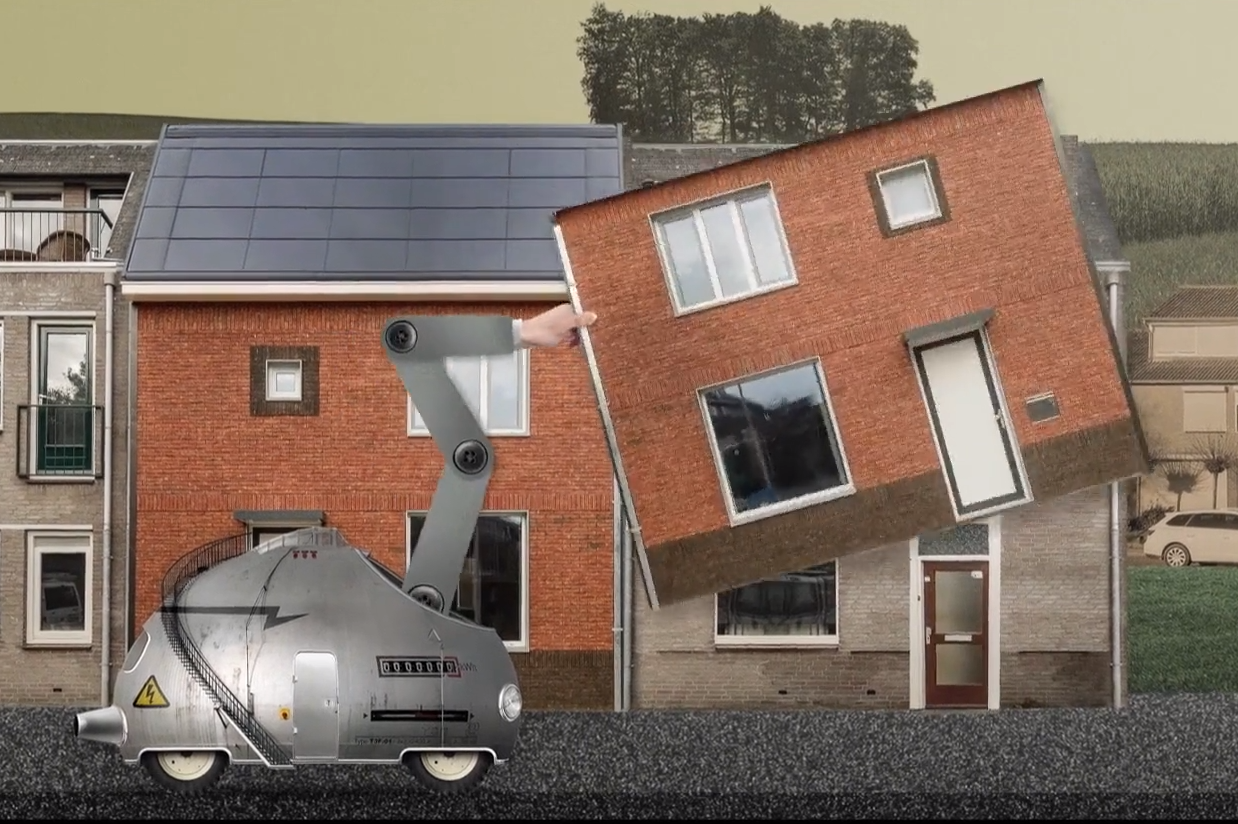January 2020: more record breaking generation!
Renewables continue to break electricity generation records!
The share of total electricity generation from UK renewables is the highest ever recorded at 38.9% which exceeds the share of generation from gas for the first time (marginally, but still!).
This is fantastic.
Renewable electricity generation was nearly 29 TWh from July to September 2019, an increase of 16% on the previous quarter. Installed renewable electricity capacity was 46.9 GW; a 7.2% increase from the previous year.
Onshore wind generation rose by 24% (1.3 TWh) with offshore wind increasing by 43%, the highest increase across all renewable technologies, to 7.2 TWh. For the first time, offshore wind generation exceeded onshore wind generation.
Liquid biofuel consumption increased by 18%, to an estimated 696 million litres in 2019 Q3. Bioethanol consumption decreased by 2.2% while biodiesel consumption increased by 29%. In 2019 Q3, liquid biofuels represented 5.8 % of petrol and diesel consumed in road transport, up from 4.9% a year earlier.
A great start to 2020!
Continuing this great trend, 45% of the National Grid was powered by renewable energy on the evening of Tuesday 7 Jan: 45%!
Did you know we can see how much electricity is being generated by renewable energy in real time? There are a number of sites, including: http://grid.iamkate.com
Be aware that all such sites underestimate solar capacity due to the lack of export meters on houses with solar panels. The lack of monitoring of such distributed generating assets has been mentioned as a contributing factor to the severity of the impacts of the power cut on 9 August 2019.
The new Government
The Conservative manifesto and public announcement included commitments to increase offshore wind and energy efficiency. These are laudable ambitions given the climate emergency and the fact that nearly 11% of households (approx. 2.53 million) in England are classed as being in fuel poverty. Many would argue however that much more needs to be done.
Since gaining power however the Conservative government has declared that it will not produce a roadmap for Net Zero nor a strategy for the Climate Emergency until the end of 2020.
 A report by the engineering consultancy Atkins, states that to meet the target of net zero by 2050 and adhere to the Paris Agreement, the new UK Government urgently needs to ensure it rapidly develops a well-coordinated programme and builds energy infrastructure at a rate previously unseen across the country. Critically, the company states, “an optimal net-zero energy system will not be delivered by market forces alone.”
A report by the engineering consultancy Atkins, states that to meet the target of net zero by 2050 and adhere to the Paris Agreement, the new UK Government urgently needs to ensure it rapidly develops a well-coordinated programme and builds energy infrastructure at a rate previously unseen across the country. Critically, the company states, “an optimal net-zero energy system will not be delivered by market forces alone.”
While the engineering and technical challenges are straightforward, many other aspects could prove barriers to reaching the target if not urgently addressed. These include the need for the government to revisit financing models and reassess its risk appetite, realise its commitment to nuclear new build; increase capacity from renewables including offshore windfarms and floating wind technology; support the nascent Carbon Capture Storage industry, and provide greater investment in hydrogen projects and demonstrators.
Plans for more onshore wind
Notably, the Conservative government has maintained its silence on supporting the expansion of onshore wind energy, widely acknowledged as the cheapest form of large-scale electricity in the UK.
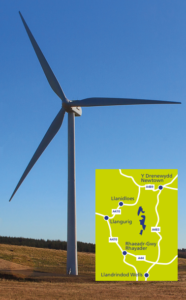 Hurrah then for EDF Renewables, which hopes to continue the expansion seen in the 2019 Q3 statistics above by its proposal to build twenty-two 5 MW turbines; a total peak of 110 MW, capable of providing power to about 66,000 homes.
Hurrah then for EDF Renewables, which hopes to continue the expansion seen in the 2019 Q3 statistics above by its proposal to build twenty-two 5 MW turbines; a total peak of 110 MW, capable of providing power to about 66,000 homes.
The development will assist the Welsh Assembly’s goal to meet 70% of its electricity needs from renewables by 2030.
The new Garn Fach site will be developed in partnership with local farming families and the development, with opportunities for local people and organisations to have a stake in the project. It will yield a community benefit fund, that could reach £550,000 a year, depending on the capacity of the site.
Electrified Transport
Everyone likes driving electric cars – even lab rats!
For people without a car parking space at home, the lack of a convenient space to charge may put them off switching to an electric vehicle. Rolling out on-street charging is therefore very important in helping everyone transition to this cleaner form of transport and reduce air pollution.
To find the best options for residents who have to park on Oxford’s narrow streets, the Go Ultra Low Oxford project is testing a range of charging technologies.
The evaluation of the first phase of the project has been released with some interesting findings. A multi-point assessment was performed of the different charging types, with lamp post chargers performing marginally the best, followed by home chargers with a cable channel, then bollard style chargers.
Residents participating in the trial stated that they didn’t change their usual habits of driving, but rather how they negotiated parking. They developed strategies to access charging spaces taking into account their activities, availability of chargers and remaining battery life of the vehicle.
The visible presence of the chargers triggered new conversations and interest in electric vehicles, which is good thing. However, there were negative aspects relating to differences in opinion on aesthetics, and pavement clutter. Surprisingly, all the chargers were vandalised, at some point during the pilot.
The researchers suggest lessons from this preliminary trial for other local authorities that may be considering installing charging infrastructure on residential streets. (1) There are many factors that govern the usability or appropriateness of parking spaces for on-street charging, and these are bespoke to every location. They include vehicle size; location of the vehicle’s charging flap; street width; length of parking bay; parking practices; perception of the potential risk of damage and need to ensure passage along the pavement. (2) A new etiquette around parking is needed to encourage spaces to be vacated once cars have charged, with strict reinforcement and awareness raising.
Back to the future!
Better public transport would negate many people’s need to use personal cars. So it is good news that electric buses have returned to Glasgow after 50 years as the city aims to become the first net zero city in the UK by 2030, or at least earlier than Edinburgh!
Glasgow’s electric trolley buses were decommissioned in 1967; the two new electric buses started service on Monday 13 Jan connecting city centre’s low emission zone (the first in Scotland) to other areas run on the M3 route. Built in Scotland, not only will the buses produce zero emissions at the tailpipe thus improving air quality, they will also be quieter and help minimise noise pollution. The bus depot will have 22 charging points installed to allow more electric buses to enter in service in the future.
The need for electrified transport in Mexico
 Following a public vote to cancel a new international airport for Mexico City, at a cost of $9 billion, the country needs to focus on electrifying its transportation system at the national level. So says Jose Valenzuela, the former director of WWF Mexico, who is currently researching regulatory capacity and the role of knowledge brokers in the decarbonisation of electricity systems in Oxford.
Following a public vote to cancel a new international airport for Mexico City, at a cost of $9 billion, the country needs to focus on electrifying its transportation system at the national level. So says Jose Valenzuela, the former director of WWF Mexico, who is currently researching regulatory capacity and the role of knowledge brokers in the decarbonisation of electricity systems in Oxford.
Mexico City has rolled out electric trolleybuses but wider opportunities to decarbonize transport, such as promoting fast train travel between cities rather than flights and introduce electric buses, is not yet being discussed in Mexico.
Jose comments that because of decisions made by previous Mexican governments to not become self-sufficient in energy, the Federal Electricity Commission the state-owned electric utility of Mexico, has now been anchored to using natural gas and lacks knowledge on how to diversify and replace gas with renewable energy. Jose believes that Mexico has enormous potential to make the transition to clean energy, but energy policies have been wrongly fixed in all administrations and these need to change urgently.
Low carbon heating
Living in a home that is not on the gas network, but is very well insulated, and includes a heat recovery system to allow maximum heating in winter and cooling in summer, has featured on an episode of the BBC’s You and Yours programme. You can hear about the experience and health benefits of living in one of over 520 low energy homes in the Leeds Climate Innovation District, and the progressive house builder who constructed the homes and lives in one himself: https://www.bbc.co.uk/sounds/play/m000c4ym (listen from 25:00 to 32:20)
The need for low carbon heating was flagged by the Committee on Climate Change in its report Net Zero: The UK’s contribution to stopping global warming that achieving Net Zero will require the full decarbonisation of buildings by 2050; and that new homes should be not be connected to the gas network from 2025.
 In response, the government set out its proposed “Future Homes Standard” (England only) to be rolled out from 2025, which includes options to increase the energy efficiency requirements for new homes, which should produce 75-80% fewer CO2 emissions compared to those built to current requirements. This would be achieved through very high fabric standards and a low carbon heating system delivered by heat pumps or heat networks.
In response, the government set out its proposed “Future Homes Standard” (England only) to be rolled out from 2025, which includes options to increase the energy efficiency requirements for new homes, which should produce 75-80% fewer CO2 emissions compared to those built to current requirements. This would be achieved through very high fabric standards and a low carbon heating system delivered by heat pumps or heat networks.
Have your say in the Future Homes Standard consultation before it closes on 7 February 2020.
Despite great progress in decarbonising electricity generation, there has been almost no progress on decarbonising heating: almost 86% of homes in England are heated by the national gas grid. Tackling climate change means using heating systems that do not use combustion. We must switch to using heat pumps to transfer heat from the air or ground to heat buildings, and deploy more heat networks. There are around 17,000 UK networks across domestic, public, industrial and commercial sectors. These however only serve about 2% of the overall UK heat demand: a much higher share can be achieved.
 Businesses and householders looking to install a heat pump could benefit from the Renewable Heat Incentive (RHI), a financial incentive to encourage the uptake of renewable heat technologies to tackle climate change. Available since 2014, it is scheduled to end on 31 March 2021.
Businesses and householders looking to install a heat pump could benefit from the Renewable Heat Incentive (RHI), a financial incentive to encourage the uptake of renewable heat technologies to tackle climate change. Available since 2014, it is scheduled to end on 31 March 2021.
Yet, the Government has not announced how it will encourage low carbon heating after this date, nor the support the supply chains on which it relies. This is concerning given that any new policy needs time to be rolled out and become established. Might it be continued or replaced? If the government is serious about decarbonising energy, and promoting heat pumps and networks then it must continue to give support. Otherwise, there will be severe damage to the renewables sector, with losses of both jobs and technical know-how.
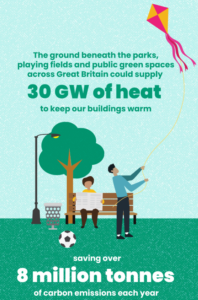 “heat pumps in parks…could be one of the most effective and low cost technological solutions for decarbonising heat in urban areas”
“heat pumps in parks…could be one of the most effective and low cost technological solutions for decarbonising heat in urban areas”
The campaign group Possible have been working with multiple partners to estimate the potential contribution from ground sourced heat pumps located in the parks, playing fields and publicly accessible green spaces of England, Scotland and Wales.
The research found that the amount of heat that could potentially be supplied totals around 30 GW or about 10% of the country’s total peak heat demand (about 170 GW).
The London borough of Richmond upon Thames was the local authority with the greatest total potential from parks. Birmingham City Council came out top when considering parks and green spaces, as did other populous locations such as Glasgow and Cardiff.
If 100% of this potential was exploited, over 5 million homes would receive clean green heat and 8 million tonnes of carbon emissions could be avoided each year (more than 2% of the country’s total emissions). Generating energy from public or amenity green spaces could produce a revenue for cash-strapped local authorities, and safeguard these community spaces from development pressure such as housing.
Another fantastic contribution to help roll out more heat networks is the Greater London Authority’s Heat Map completed in July 2019. This shows energy information on a building scale including heat demand values for each building, locations of existing energy supply plants and heat networks, and heat demand.
The purpose of this informative map is to help community groups, energy consultants, developers and others find potential opportunities for decentralised energy projects, and give London Boroughs useful information to help develop energy master plans. Importantly, the map includes a tool for heat network design intended to support preliminary techno-economic appraisals of potential district heating networks.
What about existing housing?
The Future Homes standard is good news. But what about the existing 25 million homes in the UK? Everyone agrees that insulating existing homes should be done urgently to keep people warm and to act on climate change. Alas, the Westminster government seems to have no plans on these properties, and has scrapped grants that would help to reduce home energy use, even though it acknowledges this would have saved millions of tonnes of carbon emissions….
The Scottish Government is more progressive. As part of its desire for all housing stock to play a full part in Scotland’s efforts to tackle climate change and eradicate fuel poverty, the Scottish Government is proposing legally binding, minimum energy efficiency standards (EPC band C) for owner occupied housing. The proposed trigger points for needing to achieve the minimum standard would be either the point of sale or major renovation.
This proposal follows its move to bring new rental tenancies to minimum of EPC Band D for new tenancies after 1 April 2022 and for all tenancies by 31 March 2025.
The new proposals are founded on the fact that most homes in Scotland (62%) are owned by occupants, so regulations for rented homes will not apply to them. Only 38% of owner-occupied homes are at EPC band C or better, which means around 930,000 homes are still below that level.
Housing Minister Kevin Stewart said, “We are facing a global climate emergency and for our part, the Scottish Government is doing all we can to tackle climate change. That is why we are supporting home owners to make their homes warmer and cheaper to heat. Social landlords are already making excellent progress towards their energy efficiency target and with this standard, we will help homeowners to do the same. By the end of 2021, we will have allocated more than £1 billion since 2009 to tackle fuel poverty and improve energy efficiency to make homes warmer and cheaper to heat.”
Input your views to the consultation, which is open until 26 Mar 2020.
Energiesprong: a whole house refurbishment and new build standard
An exciting and award-winning approach is the Dutch concept called Energiesprong: a whole house refurbishment and new-build standard. Typical retrofitting would include new exterior walls, insulation foundation, and solar panels, described as having a “tea cosy…fitted around it” with a complete house makeover taking fewer than 10 days.
The UK Energiesprong team has started to work with the social housing sector, with the aim to then expand to the private homeowner market. The approach is that a housing association would finance an Energiesprong retrofit by combining savings on energy costs from tenants and on repairs and maintenance. The tenants pay the same monthly fees to the housing association but in the form of an energy service plan that covers a guaranteed indoor temperature, an allowance for hot water per day and a power bundle for light and appliances.

